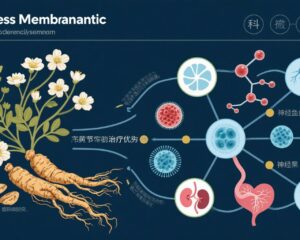Highlights
- The last decade’s research underscores silymarin’s multifaceted pharmacological properties, notably antioxidant, anti-inflammatory, hepatoprotective, neuroprotective, and metabolic regulatory effects.
- Robust evidence supports silymarin’s clinical efficacy in nonalcoholic fatty liver disease (NAFLD), type 2 diabetes mellitus (T2DM), and related complications including diabetic nephropathy and neuropathy.
- Emerging data reveal silymarin’s potential adjunctive benefits in neurodegenerative disorders, such as Alzheimer’s disease, and its role in rheumatologic conditions like rheumatoid arthritis and osteoarthritis.
- Preclinical and limited clinical studies suggest radiosensitizing effects enhancing radiotherapy efficacy in cancer; topical formulations demonstrate promise for dermatologic indications including acne and radiodermatitis.
Background
Silymarin, a flavonolignan complex extracted from Silybum marianum (milk thistle), has long been used for liver disorders. Over the past decade, advances in preclinical and clinical research have elucidated multiple therapeutic mechanisms and expanded its disease targets. The rising global burden of metabolic syndromes, chronic liver diseases, neurodegeneration, and inflammatory conditions highlight urgent unmet clinical needs. As a natural compound with a favorable safety profile, silymarin’s pharmacological versatility offers a valuable complementary strategy. This review synthesizes the latest decade’s evidence from randomized controlled trials (RCTs), meta-analyses, and mechanistic studies to define silymarin’s current clinical application landscape and future therapeutic potential.
Key Content
1. Pharmacodynamics and Mechanisms of Action
Silymarin comprises primarily silibinin (or silybin), isosilybin, silychristin, and silydianin. It exerts potent antioxidant effects by scavenging reactive oxygen species (ROS), enhancing endogenous antioxidant enzymes like glutathione and catalase, and inhibiting lipid peroxidation. Anti-inflammatory actions arise from downregulation of pro-inflammatory cytokines (TNF-α, IL-6, IL-1β), suppression of NF-κB signaling, and immunomodulation. Hepatoprotective mechanisms include stabilization of hepatocyte membranes, promotion of ribosomal RNA synthesis enhancing liver regeneration, and inhibition of fibrogenic pathways. Additional properties involve neuroprotection via anti-apoptotic effects and modulation of amyloid plaques, metabolic improvements through insulin sensitization, and modulation of gut microbiota composition.
2. Metabolic Diseases and Diabetes Mellitus
A 2024 systematic review (PMID: 38801454) encompassing molecular to clinical studies highlighted silibinin’s efficacy in improving glycemic control by reducing insulin resistance, modulating glucose metabolism pathways (glycolysis, gluconeogenesis), and lowering oxidative stress and inflammatory markers. Clinical evidence demonstrates reductions in fasting glucose, HbA1c, triglycerides, LDL cholesterol, and improvement in HDL cholesterol profiles. Silymarin also mitigates diabetic complications, including hepatic damage, endothelial dysfunction, nephropathy, retinopathy, neuropathy, and osteoporosis, through anti-inflammatory and antioxidant mechanisms. Meta-analyses confirm significant reductions of inflammatory markers such as CRP and IL-6 in diabetic populations treated with silymarin capsules (PMID: 38372848). These findings support silymarin as an adjunct in T2DM management and complication prevention.
3. Liver Diseases: NAFLD and Cirrhosis
NAFLD, affecting over one-third of the global population, remains without approved pharmacotherapy. Recent meta-analyses (PMID: 38579127) of 26 RCTs involving 2375 patients demonstrate that silymarin supplementation significantly improves liver function tests (ALT, AST), lipid profiles, insulin resistance indices (HOMA-IR), and reduces hepatic steatosis scores and fatty liver indices. Combination therapy of silymarin with traditional Chinese medicine (PMID: 38306552) yields superior biochemical and symptomatic improvements compared to silymarin alone.
In cirrhosis, where therapeutic options are limited, systematic reviews (PMID: 37218361) indicate silymarin’s potential to improve liver enzyme levels and functional markers without serious side effects, though high-quality trials remain sparse. An umbrella review (PMID: 38371505) integrated diverse natural products, affirming silymarin’s positive influence on liver enzyme normalization.
4. Neurodegenerative Disorders and Cognitive Health
A randomized, single-blind trial involving Alzheimer’s disease patients (PMID: 38353101) showed that adjunctive silymarin reduced oxidative biomarkers (malondialdehyde, catalase) and improved cognitive scores (MMSE). The neuroprotective mechanisms are attributed to the reduction of oxidative stress, inflammation, and neuronal apoptosis. These findings encourage further exploration of silymarin as an adjunctive neuroprotective agent.
5. Rheumatologic Conditions
A systematic review (PMID: 38314596) focused on rheumatoid arthritis (RA) and osteoarthritis (OA) demonstrated that silymarin and silibinin provide anti-inflammatory, immunomodulatory, antioxidant, and anti-apoptotic effects. These compounds protect cartilage from degeneration, reduce synovitis, and alleviate pain through cytokine inhibition. Nanoparticle formulations have been proposed to overcome bioavailability limitations. However, clinical studies are limited and further trials are essential to validate efficacy.
6. Oncology and Radiotherapy Adjunct
Silymarin exhibits radiosensitizing properties by amplifying DNA damage, increasing apoptosis, and inhibiting tumor angiogenesis and metastasis (PMID: 37921180). These effects were demonstrated in preclinical cancer models treated concurrently with ionizing radiation. Moreover, silymarin may ameliorate radiation-induced dermal toxicity, supporting its use in radiodermatitis prevention and therapy in breast cancer patients (PMID: 37816677, 37211432). Clinical trials are warranted to confirm these benefits.
7. Dermatological Applications
In a split-face clinical trial (PMID: 37942562), topical silymarin cream was as effective and well tolerated as 30% salicylic acid peels in reducing mild to moderate acne vulgaris with no adverse effects noted, suggesting an alternative safe therapeutic option. Silymarin also shows promise in mitigating radiotherapy-induced skin damage.
8. Other Clinical Domains
In β-thalassemia children and adolescents, silymarin improves oxidative stress markers and modulates iron metabolism, reducing transfusion requirements and organ siderosis (PMID: 38818907). Additionally, a Brazilian randomized trial demonstrated that silymarin-containing nutraceutical blends favorably modulate gut microbiota and cytokine profiles, benefitting obese patients with metabolic dysfunction (PMID: 38750102, PMID: 36778595).
Expert Commentary
Despite encouraging evidence, several challenges remain regarding silymarin’s clinical translation. Its poor bioavailability necessitates formulation advances, including nanoparticle delivery and combined therapies. Heterogeneity in study design, dosing, treatment duration, and endpoints complicate meta-analytic interpretation. The safety profile is overall excellent, but long-term data and standardized preparations are essential for regulatory approval and clinical guidelines inclusion.
Mechanistic insights reveal silymarin’s pleiotropic actions affecting oxidative stress, inflammation, cellular metabolism, and immune modulation, which logically underpin its therapeutic effects across diverse conditions. Clinical integration awaits further large-scale, well-controlled RCTs to delineate efficacy, optimal dosing, and patient selection. The request for multi-omics and microbiota-based biomarkers in ongoing trials is especially relevant for personalizing therapy.
Conclusion
Over the past decade, research has significantly advanced understanding of silymarin’s therapeutic potential. Substantial evidence supports its clinical efficacy in NAFLD, T2DM-related complications, and neurodegenerative and inflammatory diseases. Emerging roles in oncology adjunct therapy and dermatology appear promising. Future research directions include enhanced bioavailability formulations, large-scale clinical trials, exploration of microbiome interactions, and mechanistic studies to optimize personalized clinical use. Silymarin stands as a safe, cost-effective, and multifactorial herbal compound poised to complement modern medicine across various domains.
References
- Hassani F et al. Silibinin as a major component of milk thistle seed provides promising influences against diabetes and its complications: a systematic review. Naunyn Schmiedebergs Arch Pharmacol. 2024 Oct;397(10):7531-7549. PMID: 38801454
- Azizi H et al. Adjunctive silymarin supplementation and its effects on disease severity, oxidative stress, and inflammation in patients with Alzheimer’s disease. Nutr Neurosci. 2024 Oct;27(10):1077-1087. PMID: 38353101
- Yang M et al. Administration of silymarin in NAFLD/NASH: A systematic review and meta-analysis. Ann Hepatol. 2024 Mar-Apr;29(2):101174. PMID: 38579127
- Zhang Q et al. Effects of silymarin supplementation on liver and kidney functions: A systematic review and dose-response meta-analysis. Phytother Res. 2024 May;38(5):2572-2593. PMID: 38475999
- Wang Y et al. Efficacy and Mechanisms of Silymarin and Silibinin on Rheumatoid Arthritis and Osteoarthritis Symptoms: A Systematic Review. Curr Rheumatol Rev. 2024;20(4):414-425. PMID: 38314596
- Mohammadi A et al. The Radiosensitizing Potentials of Silymarin/Silibinin in Cancer: A Systematic Review. Curr Med Chem. 2024;31(42):6992-7014. PMID: 37921180
- Dehghan M et al. Topical Silymarin Cream as a Novel Therapy Versus Salicylic Acid Peels in Acne Vulgaris: A Split-Face Clinical Trial. J Cutan Med Surg. 2024 Jan-Feb;28(1):22-28. PMID: 37942562
- Ghaffari S et al. The Effects and Safety of Silymarin on β-thalassemia in Children and Adolescents: A Systematic Review based on Clinical Trial Studies. Rev Recent Clin Trials. 2024;19(4):242-255. PMID: 38818907



